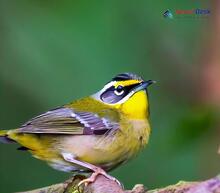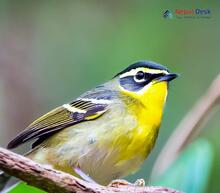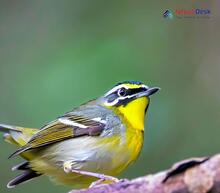Discovering the Enigmatic Abroscopus: A Journey Through Nepal's Avian Diversity
Nepal is a treasure trove of biodiversity, owing much of its richness to its diverse geographical landscape. As a result, this small country nestled in the lap of the Himalayas is home to a magnificent array of bird species. Among these captivating creatures is the lesser-known yet fascinating genus Abroscopus. This article delves into the mesmerizing world of Abroscopus, exploring its classification, common features, evolutionary relationships, and nomenclature.
Classification of Abroscopus Species in Nepal
Within the Nepalese avian community, the Abroscopus genus encompasses two intriguing species: the Black-faced Warbler (Abroscopus schisticeps) and the Yellow-bellied Warbler (Abroscopus superciliaris). Both warblers can be found in Nepal's subtropical and temperate forests at elevations ranging from 1,000 to 2,400 meters.
Common Features and Morphology
Abroscopus warblers share various common features that distinguish them from other bird species. They are small-sized birds with a length of approximately 10-12 centimeters. Both species possess striking plumage with varying hues. The Black-faced Warbler has a characteristic black face mask contrasted with a white eye-ring and grayish-brown upperparts. Meanwhile, the Yellow-bellied Warbler sports a distinctive yellow belly and creamy white supercilium.
The warblers' diet primarily consists of insects, which they skillfully forage on by gleaning foliage or hovering in mid-air to snatch their prey. Additionally, these birds display remarkable agility as they maneuver through dense vegetation while emitting high-pitched calls to communicate with other individuals.
Evolutionary Relationships and Phylogeny
The evolutionary origins and relationships within the Abroscopus warblers have been subject to research and analysis. Molecular studies have demonstrated that they belong to the diverse family of leaf warblers, Phylloscopidae. Establishing a comprehensive understanding of their genetic relationships provides invaluable insights into the complex evolutionary history and diversification patterns of these captivating birds.
Nomenclature: Naming the Abroscopus
The nomenclature of Abroscopus species highlights the importance of scientific naming systems in accurately identifying and cataloging species. The genus name 'Abroscopus,' derived from Ancient Greek, translates to "bronze-look" or "glittering" appearance. This terminology is likely inspired by the unique shimmering hues displayed by Abroscopus warblers' plumage.
In summary, the genus Abroscopus presents a remarkable opportunity to explore Nepal's rich and diverse avian life. Their intriguing classification, common features, evolutionary relationships, and nomenclature provide researchers and bird enthusiasts alike with the chance to delve into the enigmatic world of these fascinating warblers. By further unraveling their secrets, it is certain that they will continue to captivate our hearts and our imaginations for generations to come.




